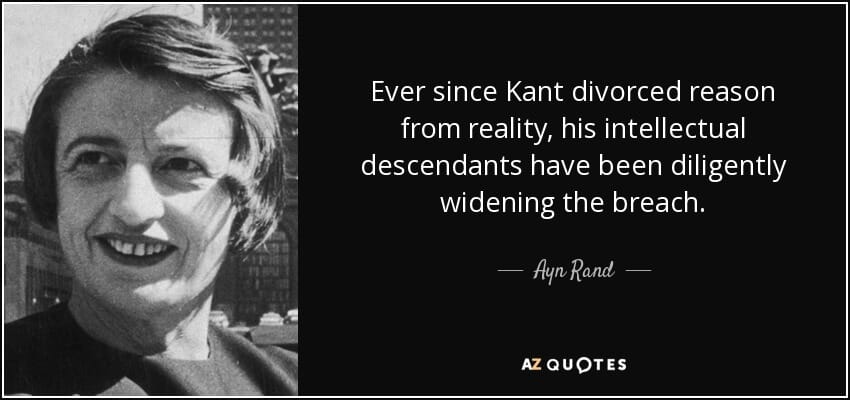How to Fix Kant
Table of Contents
In a previous post, we explained that Kant destroyed Philosophy by using wrong definitions which then made his system useless. To prove its uselessness, let’s translate his strange definitions into ordinary English:
| Original English | Layman’s English | Meaning |
|---|---|---|
| Transcendental | Metaphysical | Beyond physicality |
| subject | main | idea |
| predicate | sub-idea | Connected to the main idea |
| intuitions | passive knowings | The mind arrives at the thought automatically, the mind is like an apple falling effortlessly |
| conceptions | active knowings | The mind makes an effort to create the thought, the mind is like an airplane or bird making an effort to fly |
| analytic | passive-thinking | The passive effort of the mind to connect ideas (rather than using ‘union’ or ‘division’, this paradigm uses ’energy’) |
| synthetic | active-thinking | The active effort of the mind to connect ideas beyond what it is immedately connectable (forming things takes more energy than smashing them to pieces, fusion needs more energy that fission) |
| analytic judgement | passive-thinking judgement | like a CPU getting data easily from RAM |
| synthetic judgement | active-thinking judgement | like a CPU getting data from the Hard disk or other inputs as external experiences with more effort |
| a priori | confined-to-the-mind | Mind does not look outward |
| a posteriori | mind-goes-out | Mind looking externally |
| synthetic judgement a priori | active-thinking judgement confined-to-the-mind | like a CPU getting data from the Hard Disk, or a person thinking seriously alone |
This converts the confusing word “synthetic a priori judgements” into “judgements made from active thought confined within the mind”, or for brevity, “active-thinking judgements confined-to-the-mind”. This includes any serious thought, problem solving, and even prayer or meditation that is supposed to output an answer.
This simplifies the statement:
Geometry is a science which determines the properties of space synthetically, and yet à priori.
into:
Geometry determines the properties of space through active-thinking, yet confined-to-the-mind.
Much easier, huh?
With geometry, you can think of whatever shapes inside your mind and it would be fine. But you can’t do the same with geology or chemistry. But why did Kant end up having to create so many weird new concepts anyway?
A Natural Consequence of Denying Experience, Feeling, and Reality

According to David Hume, all thinking is based on feelings.
If a computer were a thinking being, then its electricity would be its feeling. A computer with no electricity cannot think and is technically dead, but once electricity runs through it, it becomes ‘alive’ and starts to process logic in its virtual memory.
For some reason, Kant denies reality in order to focus purely on the virtual by cutting off all experience and feeling. This is similar to unplugging a computer to see how a computer would run all by itself.
Instead of relying on an external power source or external experiences and feelings, he imbues the mind or computer with that power directly from his own mind, by assigning new qualities and dimensions to its processes:
| Thinking Process Factor | Quality 1 | Quality 2 |
|---|---|---|
| Energy | Synthetic (active) | Analytic (passive) |
| Effort | Conception (active) | Intuition (passive) |
| Scope or Location | a posteriori (outside the mind) | a priori (within the mind) |
It’s similar to Islam banning interest on loans, which causes it to be transferred as rent as a workaround or roundabout solution, and then creating processes to regulate rent, as a bloated complex idea called Shariah banking.
Kant bans reality and so he has to recreate everything himself. This is why Kant must have the highest regard for his own mind (since it’s the one that powers everything in his Kant-only-reality):
The reality of the object of our internal sense (that is, myself and my internal state) is clear immediately through consciousness. External objects in space might be a mere delusion. But the object of my internal perception is undeniably real.
kant
Probably a German Thing
Instead of basing the judgement on strong or weak feelings or sensations and their location or distance from the self, Kant adds strength or weakness and distance on the thinking action itself. This is why he has to painstakingly specify whether each thought process was:
- high energy (active thinking)
- low energy (passive thinking)
- was confined (a priori)
- not confined (a posteriori)
Mechanically, it would be like totally denying the relation of gasoline consumption to engine power, or electrical consumption to CPU speed with the belief that the engine power and CPU speed can run by themselves, or that the mind exists for or by itself (as “I think”). These then leads to obvious fallacies in his explanation of the nature of time, existence, and, more importantly, of morals.
Hegel and Marx as similarly-complicated-writers who write so much but have relatively little meat or valuable thought. All of this makes us pity the philosophy students who try to understand Kant.
The Germans are the only people who at present use this word to indicate what others call the critique of taste.
Kant

The Useless Theory of General Relativity
The most disastrous product of this strange German mentality is Albert Einstein who used Kant-style thinking to create the Theory of Relativity, which is totally arbitrary.
This only requirement for this “way of thinking” is for it to be useful. The objective factor is our perceptions.
Physical thinking justifies itself by its ability to grasp experiences intellectually, giving us “knowledge of the real.”
This “real” in physics is to be taken as a type of program, to which we are, however, not forced to cling a priori.
The theoretical attitude that I advocate here is distinct from that of Kant only in the sense that this way of thinking is not unalterable. Rather it is based on free conventions.
Einstein-sophist

Like Kant, Einstein used his own mind to assign reality to spacetime by turning it into a fabric that dictates how the universe moves, expands, is warped, etc. This then allows physicists to create their own spacetimes according to their own imagination:
- Walker created a universe with Robertson-Walker spacetime
- De Sitter created a De Sitter spacetime
- Godel created a Godel universe
- Taub led to a universe with Taub-NUT spacetime
- Penrose created a cyclical universe as Conformal Cyclic Cosmology
Useless Kant, Useless Einstein, Useless Physics
Some of those physicists then get Nobel prizes for theories that have no reality. This is similar to:
- academics who peddle useless courses or degrees that students pay for with real money
- crypto startups which peddle gradiose ideas powered by useless cryptocurrency or NFTs
This useless Einsteinian physics is totally opposite of ancient physics (from the ancient Greeks to Descartes) which already concluded that spacetime is an illusion and has no reality.
Newton’s physics created so many technologies that we still use today. But Einstein physics only claims global positioning satellites (GPS) as its product. Einstein’s supporters ignore the fact that engineers would have perceived the time-differences in their satellites and made the adjustments themselves without needing the idea of a spacetime fabric*.
Superphysics Note
We pity the physicists wasting their time trying to unify Quantum Physics and General Relativity as String Theories which are practically useless.
In a free society, it is alright to allow sophistical theories. But it is totally wrong to decree that such wrong theories are correct, and that the wrong way is the right way. Doing so would be like to guiding people onto a cliff, as is happening to the current world which has no solution to global warming, overpopulation, stagflation, war, or mass extinction.